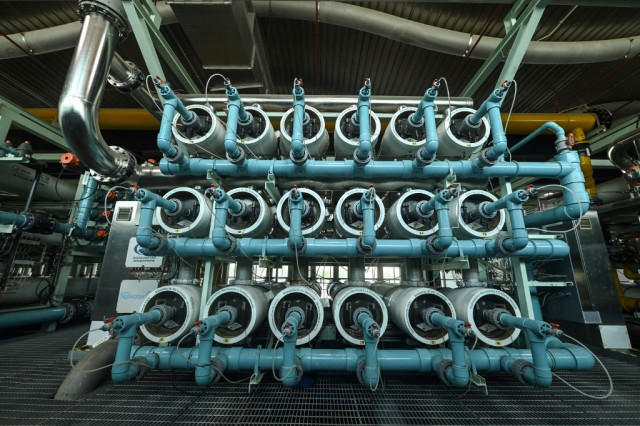Exports to Traditional Destinations Decline, New Trade Partners on the Rise

- By Meng Seavmey
- August 21, 2023 4:03 PM
PHNOM PENH – Cambodia’s trade volume reached $27.7 billion in the first seven months of this year, down 15.6 percent compared to $32.82 billion in the same period in 2022.
While the country’s exports topped $13.5 billion – down 1.8 percent – the imports fell from $19.05 to $14.17 billion – a 25.6 percent decrease – according to the General Department of Customs and Excise’s report.
Hong Vanak, an economist at the Institute of International Relations at the Royal Academy of Cambodia, told Cambodianess on Aug. 18 that the decrease in trade volume comes from the many global issues that affected the world’s economy over the last two years: the COVID-19 pandemic and the Russia-Ukraine war.
These two crises have disrupted the global supply chain and caused prices of products to increase, from gasoline to other raw materials, and consumption goods.
“These are some of the reasons why trade in some countries has decreased, and Cambodia is no exception,” the economist said.
“Another reason is that there are factories in other countries as well and the [production] quotas [from major companies] are divided when the demand decreases. It is normal to see a decrease in trade volumes when a global issue like the pandemic surges,” he added.
According to Vanak, the current decrease in Cambodia’s trade is not a complete surprise as orders from Western nations started to fall in late 2022, especially in the garment sector. The U.S. and the European Union are traditionally Cambodia’s biggest export markets when it comes to garment, footwear and travel goods.
“Until June this year, we did see that the number of orders dramatically decreased,” the economist said.
New trade partners
Despite the decline in trade volumes, Vanak noticed that the country’s exports increased in some new destinations, especially in countries members of the Regional Comprehensive Economic Partnership (RCEP).
The free trade agreement came into force in January 2022 and grants trade benefits to 15 nations of the Asia-Pacific: The 10 ASEAN countries, Australia, New Zealand, China, South Korea and Japan.
In the first seven months of the year, Cambodia’s exports to China were worth over $814 million, increasing by 16.2 percent compared to the same period last year. The country also exported nearly $1.6 billion of goods to Vietnam (a 20.6 percent increase), $448 million to Singapore (an increase of 555.7 percent), $164 million to South Korea (21.6 percent up) and $24 million to Indonesia (a 41.5 percent increase).
In the meantime, the trade balance with the U.S. decreased, with exports down by 9.1 percent and imports falling by 28 percent. Nevertheless, the U.S. remained one of Cambodia’s biggest trade partners, with exports worth $5.2 billion since January 2023.
“Previously, Cambodia’s partners reached out to other countries to source some of their products, especially for food. But now they come to Cambodia…Therefore, Cambodia is now having more opportunities to export consumption products to international markets,” Vanak said.
But there are still 5 months to turn things around, and if the decline remains stable, the economist said the current trade is not yet concerning.
“However, with this number, we also don’t expect the overall trade volume to increase much either,” he added, pointing out that there has been an increase in foreign investments in the country.
The Ministry of Commerce’s Spokesperson Penn Sovicheat said on Aug. 18 that Cambodia’s trade volume indeed decreased, however, the major export markets remain active and stable, referring to ASEAN countries, members of the RCEP and the EU.
“It’s not that we don’t notice the decline in trade volume, but the figure is nothing we should be too worried about at the moment because it is a normal decline in trades during the first half of the year. Besides, it is not the period of the year when exports to the European markets are their highest. There is still significant potential for new orders to come, despite the current decrease in trade volume,” he said.
The spokesperson added the figure might increase again at the end of the year, when the new orders usually rise up, while citizens are also benefiting from the increase in prices of agricultural products, including rice and other crops for both domestic and international supply.
“Therefore, the estimated growth rate of 5.5 percent [of the Gross Domestic Product] this year might be achieved,” the spokesperson said, adding that the country will boost productivity so that they can take full advantage of the existing duty-free schemes to increase the exports.
The first seven months of the year mark the first decrease in trade volume since 2019. Despite the COVID-19 outbreak, trade volume increased by 7.5 percent in the January-July period in 2020, up to $21.31 billion.
Trade volume then jumped to $27.04 billion in 2021, and $32.82 billion last year. Even though the volume of trade is lower than last year, it remains higher than before the pandemic started.















